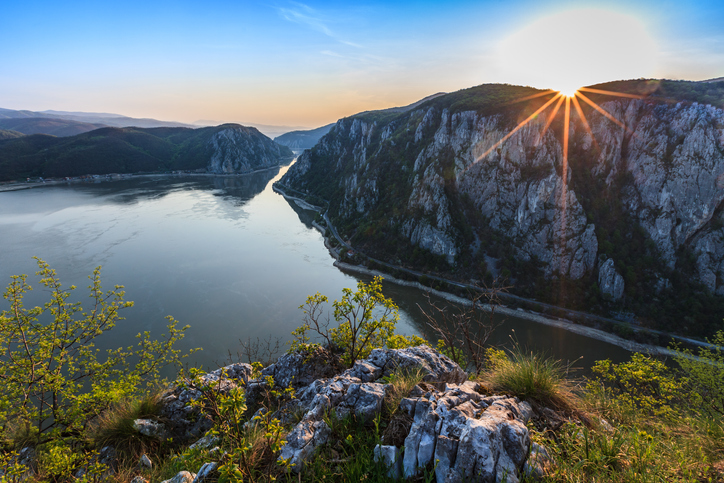To think of Romania is to close your eyes and see the image of Count Dracula and Transilvanía. Its capital Bucharest, with its Parisian air, also comes to mind But once the most obvious images are overcome, there are other much less known places that are still great secrets of the country …
We invite you to know in this trip hidden places of a country with a lot of history. We are going to navigate the Danube Delta, that great river of almost 3,000 kilometers, a muscular vehicle of cultures and civilizations, that after crossing half of Europe, crossing ten countries and bordering big cities like Vienna, Bratislava, Budapest and Belgrade, penetrates into Romania to cross it also from west to east and rest at last in the Black Sea, creating the largest Delta in Europe and one of the great Biosphere Reserves and World Heritage.
A walk through the classics
When you are asked to think of Romania, the seductive image of Bukovina’s churches and monasteries on the eastern slopes of the Carpathians comes to mind, containing several murals depicting everything from orthodox biblical scenes to the Ottoman Siege of Constantinople in the 15th century; owing to their astounding beauty – and to facilitate their conservation – they have been declared UNESCO World Heritage Sites.

Equally splendid are the wooden splint-roofed churches with worn Gothic bell towers and exquisite interiors, also displaying biblical murals, as well as farms with delicately carved gates.
The Merry Cemetery in Săpânța (Maramureş County), meanwhile, is home to a series of colourful naively-painted wooden tombstones. Many consider this to be Romania’s most beautiful region, home to the last remaining rural culture in Europe.
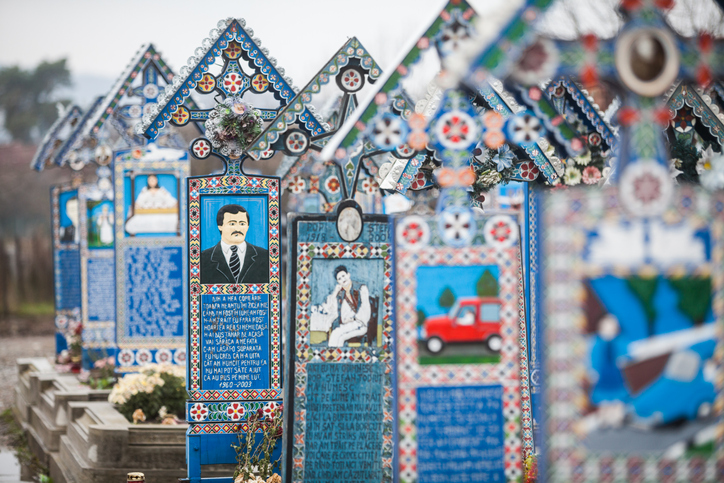
When you are asked to think of Romania, you will naturally think of some of its most famous cities such as Sibiu, with two clearly distinct areas, three cathedrals (one for each religion), its faded-yet-colourful bare facades, streets and its cobblestoned courtyards.
Relatively nearby is the city of Brasov, framed by mountains and dense forests. This is one of Romania’s most beautiful and touristic cities, which has a medieval old town filled with colourful houses, where all of the streets lead to the ever-lively Sfatului Square.
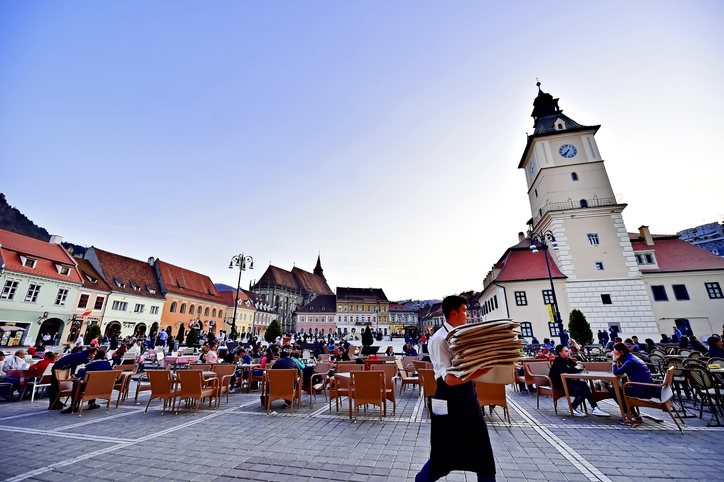
More to the north is Timișoara, which some people refer to as the ‘Romanian Barcelona’ owing to its rivalry with the capital city and its wealth of industry. This was where the revolution against dictator Ceaușescu began in Christmas 1989. On the stairs of the cathedral, you can still see traces of blood from the first victims of repression (although these have perhaps been touched up with a spot of paint).
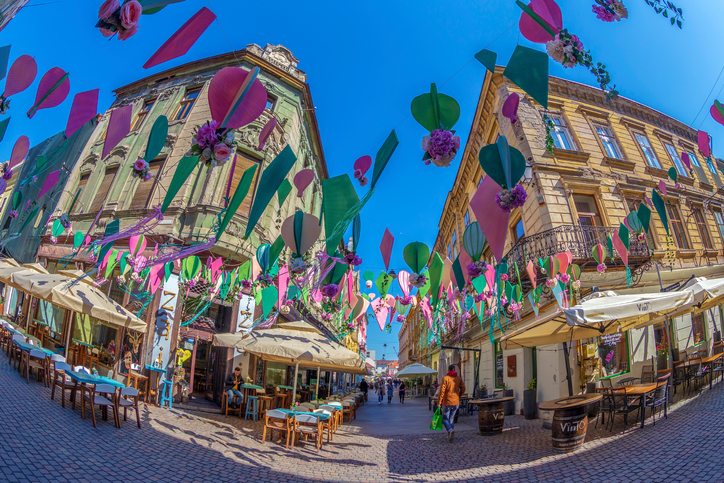
However, when you talk to someone about Romania, it’s impossible not to discuss its capital city, Bucharest. Despite its Parisian vibes – including its own Arc de Triomphe and wide boulevards – many people feel this city is somewhat charmless. Despite this common viewpoint, Bucharest has changed lots in recent years. I
t is now a lively city full of young people, boasting huge buildings and an endless range of the best high street shops. You are bound to refer to the ‘People’s Palace’, which was originally built during the dictatorship. Despite its origins, many Romanians still love this building, which has 1,100 bedrooms, 10-metre tall Bohemian glass lamps and 8-centimetre thick rugs. This is the world’s second largest building, only exceeded in size by The Pentagon in Washington DC.
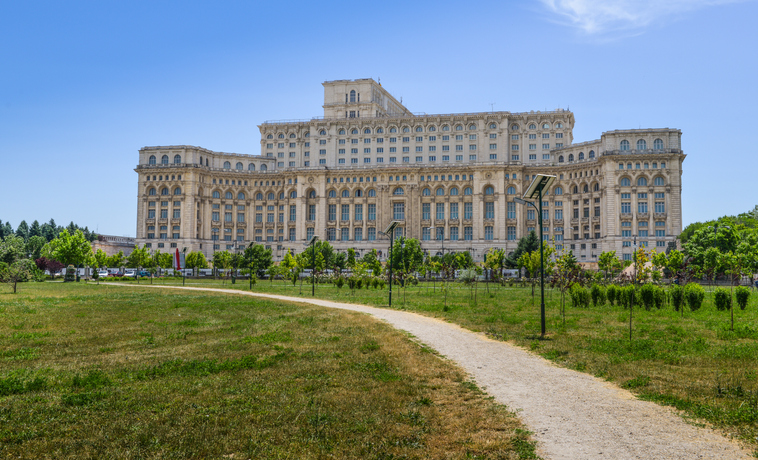
The inevitable Dracula
When you talk about Romania, your mind is bound to evoke images of Transylvania and its picturesque cities. One such example is Cluj-Napoca, the country’s second biggest city, which is now home to bohemian cafes, restaurants, music festivals, night clubs and bars, and is also the country’s hub of contemporary art.
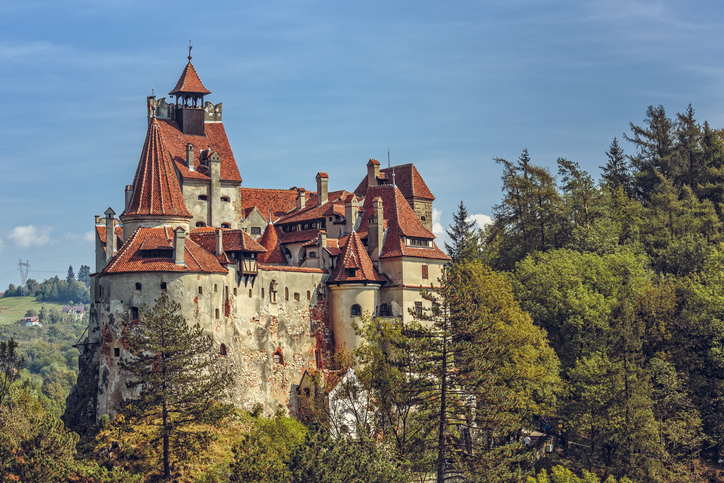
You might also think of Sighișoara, a brilliantly charming medieval city that is noteworthy for its magnificent clock tower and city walls. Sighișoara’s biggest claim to fame, however, is that it was the birthplace of Vlad the Impaler, a famously cruel 15th-century nobleman who became known as ‘Dracula’, which literally means “Son of Dracul” or “Son of the Dragon”, which was his father’s title.
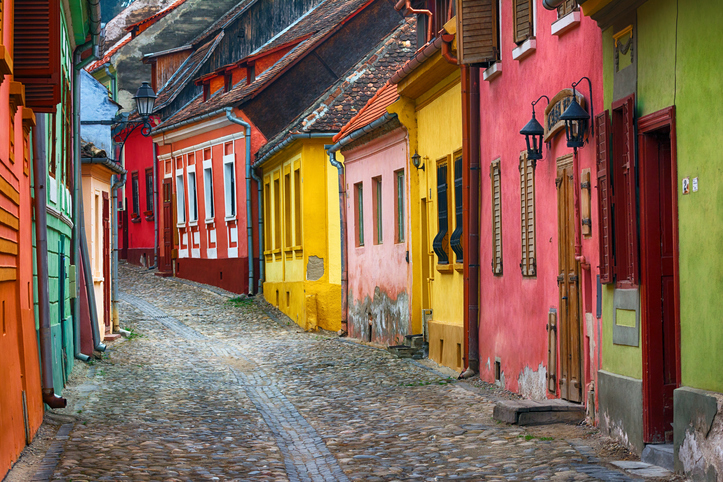
Although some people might not like it, it’s only natural to talk of Dracula when you’re talking about Romania. But, which Dracula? The most famous Dracula is that created by Bram Stroker, a mediocre Irish author who never left his country, and who therefore never even stepped foot in Romania. Nonetheless, he used the name of Vlad the Impaler – famous for his wicked ways – for his new monster. The book was relatively well received in its day, with Oscar Wilde referring to it as the best horror book of all time, also calling it “the most beautiful novel ever written”.
The ‘other’ Romania
Having discussed Romania’s most famous landmarks and places, you should also be sure to talk about other locations that are not so famous, which remain something of a hidden treasure to this day. The most obvious one is the Danube Delta.
This long river, measuring almost 3,000 kilometres from source to mouth, is a muscular vehicle of cultures and civilisations. After passing through half of Europe – including 10 different countries – and slipping through important cities such as Vienna, Bratislava, Budapest and Belgrade, it penetrates Romania in the West and crosses until the East.
Ending in the Black Sea, this is Europe’s largest Delta: a UNESCO-recognised Heritage and Biosphere Reserve. This is Romania’s newest land; a land of unspoiled beauty, nature and desert. Its origin, however, is remote, as it was first formed around 6,000 years ago on the shores of the Black Sea, when a sand barrier blocked the Danube Bay. Over time, the bay filled with sediment and the Delta started advancing towards the sea.
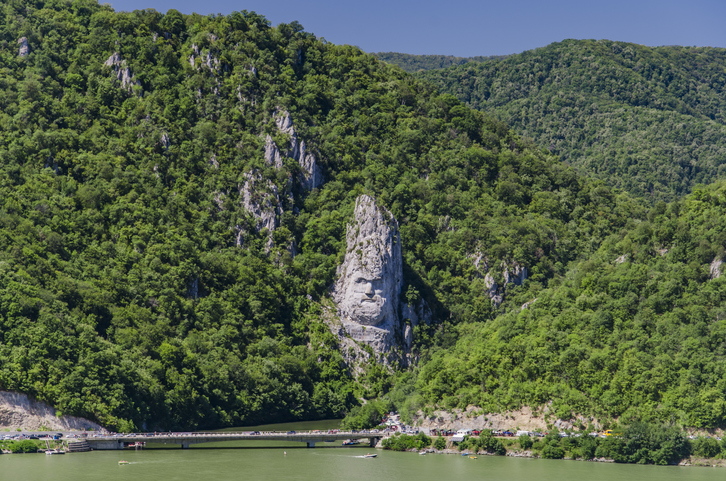
The waters of the Danube are brown and grey, depending on the quality of the mud that the water drags along. Over time, the river has had over 300 different tributaries. Johann Strauss’ ‘Blue Danube’ almost certainly never existed. A popular urban legend links the title of the piece to the composer’s love for a drink. In Vienna, there is saying that claims people “turn blue” when they drink too much, similar to how people supposedly “turn red” in Spain when they eat too much. Perhaps the genius composer celebrated his waltzes a little too hard and started to see everything in blue!
These brown waters, besides carrying mud and chunks of driftwood, also take different plastics, tins, industrial waste and all kinds of rubbish (up to 1,500 tonnes every year) with them, which is thrown into the great river by uncivilised sections of society.
But the colour of the waters and the objects floating down it do not detract from the outstanding beauty of the Delta, which is the largest and best preserved in Europe, comprising an intricate network of waterways and lakes split between the three main canals of the Danube estuary.
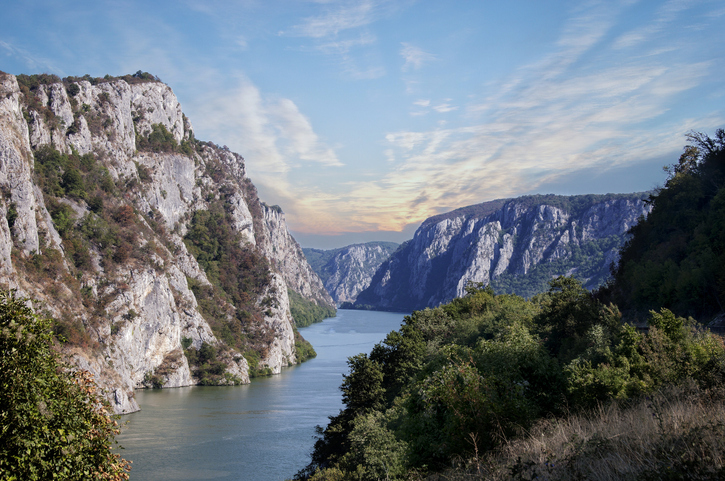
This area of floating reed islands, forests, grasslands and sand dunes covers 580,000 hectares and is the home to a fascinating mixture of cultures and people. It is also the home of a hugely diverse wildlife, comprising more than 300 species of birds and 160 species of freshwater fish in its many lakes and marshes.
This extensive area is home to around 20,000 people, around 75% of whom live in remote areas. This gives it an approximate population density of 2 inhabitants per km2. Interestingly, the Delta grows year-on-year due to 67 million tonnes of deluge annually. The area of tourist-prohibited spaces also increases every year, to such an extent that over 50% of the Biosphere Reserve remains intact.
Where is the source of the Delta?
Located at the tip of the three canals, Tulcea is an excellent starting point for exploring the Danube Delta. The city is very touristy because of its privileged location, with little else to offer apart from a fascinating museum dedicated to the Delta and a good aquarium exhibiting the species of fish found in the river and the nearby Black Sea, including a few examples of tropical fish.
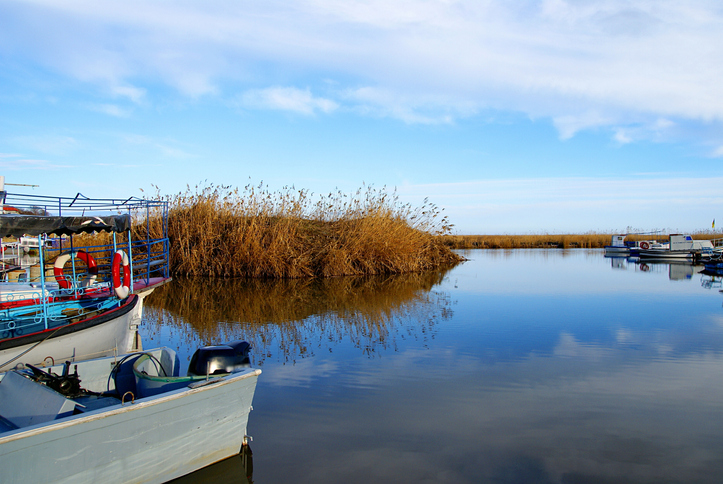
Before starting your journey down the Delta and its surroundings, we recommend visiting the Macin Winery, which produces a dozen excellent wines. We also suggest paying a visit to the early Christian church of Niculițel, which pays homage to six Christian martyrs from the Roman times. Along the way you will see a scattering of several orthodox monasteries, many of which are inhabited by monks who still breed chickens in the old-school way, drink water from wells and grow their own food.
If you’re looking to travel the Danube, you’ll need to do it in a boat. We recommend choosing a small boat and sailing slowly, giving you time to appreciate the diverse vegetation and the variety of birds, who will not be spooked by the noise. Sailing might occasionally be tricky in the narrow canals, where the tropical vines cross from one shore to the other.
Besides the indigenous vegetation, you will also find exotic plants whose seeds were carried to Romania by birds migrating from Africa: water lilies, reedbeds, salt marshes and riverside forests, each flooding at different frequencies. You are also likely to come across permanently flooded willows and periodically flooded plains.
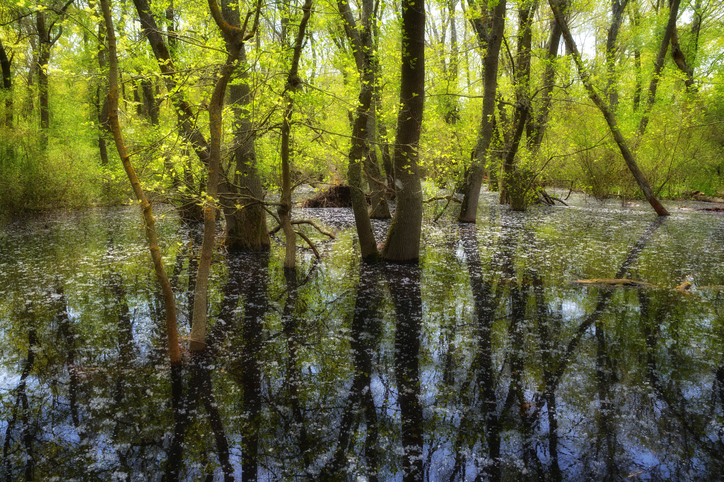
There are several forests, such as Letea Forest, which are notable for the asymmetrical shape of their treetops. These include oak trees and are often found running alongside the canals. With a bit of luck, you will be able to see a rare aquatic plant scientifically called “noctiluca miliaris”, but which is more commonly known as “sea sparkle”, whose fluorescent colour transmits the effect of magical water.
Diverse range of species
During the summer, the Delta is home to more than 320 species of birds. This includes the world’s biggest colony of pelicans, containing 6,000 different species – over half the total number of pelicans found in Europe. It is also home to more than one million birds who hibernate there, including swans, cormorants, herons, wild geese and coots. Located on the 45th parallel North, the Danube Delta is the perfect stopping point between the Equator and the North Pole for millions of migratory birds.
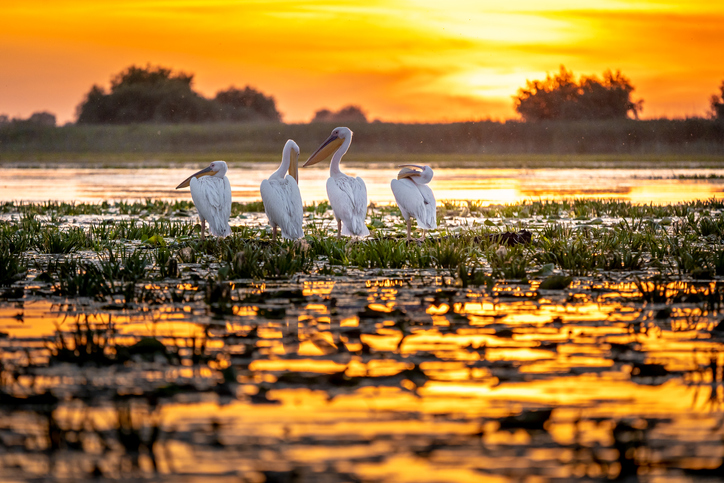
With a bit of luck, you’ll be able to catch a glimpse of a majestic pink and white Dalmatian pelican and huge flocks of bright crimson ibis, with their distinctive long and curved beak. During mating season, when the colours of the birds are at their shiniest, you might catch sight of other rare species.
These may include the pygmy cormorant or the red-breasted goose. You might also be able to hear the mating call of a heron, as a group of pelicans gracefully take to the skies in a blur of black and white wings.
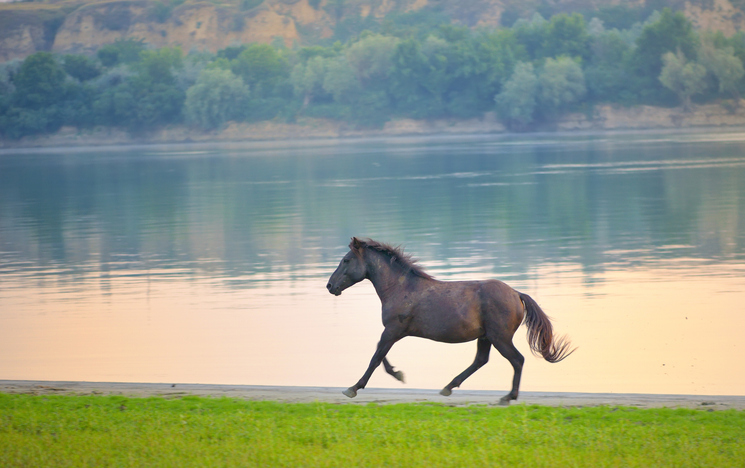
The Letea Forest is one of the only places in Europe where wild horses can still roam around freely. While you’re unlikely to see them, away from the reedbeds you may catch sight of feral cats, foxes and wolves, and maybe even the odd wild boar or deer.
The river, meanwhile, is home to 160 different species of freshwater fish, including several types of sturgeons, pikes, catfish, carps, tenches and hunting fish. Thousands of fishermen cast their lines into the dark waters every year, which surprisingly yields delicious fish. These are often used to make dishes such as the “Ciorba”, a traditional Romanian fisherman’s soup.
At the mouth of the Danube is the city of Sulina, the westernmost city of the European Union, sitting on the shores of the Black Sea. Interestingly, this was the first city to illustrate the concept of the Union, with Greek, Romanian, Russian, Armenian, Turkish, Austro-Hungarian, Albanian, German, Italian, Bulgarian, English, Montenegrin, Serbian and Polish citizens coexisting harmoniously at the end of the 19th century. They remain close to this day, lying side-by-side in the city’s Maritime Cemetery. Each nationality has its own designated plot, while the cemetery is also home to the remains of a carriage that might once have been used by Dracula himself.
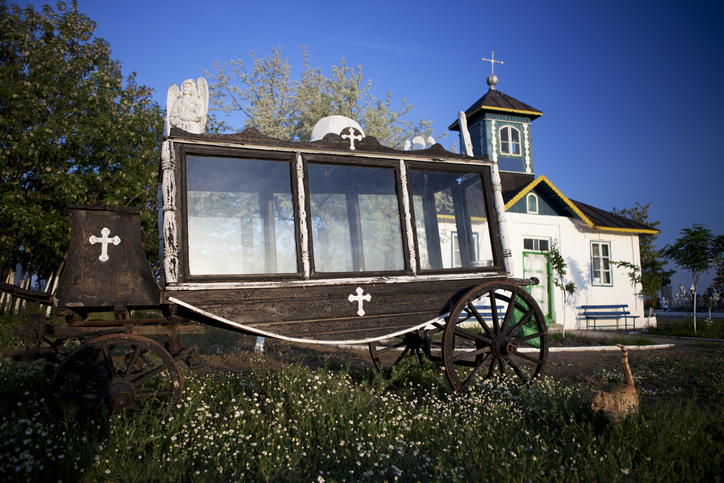
The route taken by the Danube Delta highlights another harsh reality, contrasting with the idyllic landscape of plants and birds. The skeletons of industrial buildings are a strange sight in a nature reserve. However, some of the region’s Soviet-era factories, left empty and forgotten since the revolution in 1989, display their rigid architecture which contrasts greatly with the fantastic natural beauty that envelopes them.
The Danube Delta is an economically deprived region, with high levels of unemployment, rural depopulation, low quality of life and a strong dependence on natural resources. With this in mind, initiatives such as Rewilding Europe are particularly appreciated, which works to create new opportunities for the Delta communities by supporting the development of nature-based businesses, aiming to recover rural living and help to generate a strong sense of pride in the local area. These initiatives include the local restoration of wetlands, the reintroduction of water buffalos for natural grazing, and the inauguration of a natural park to raise money for the local community.



